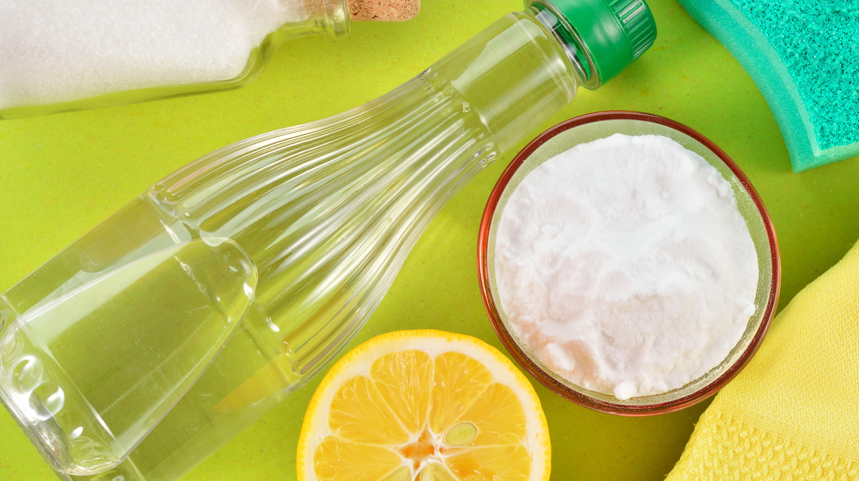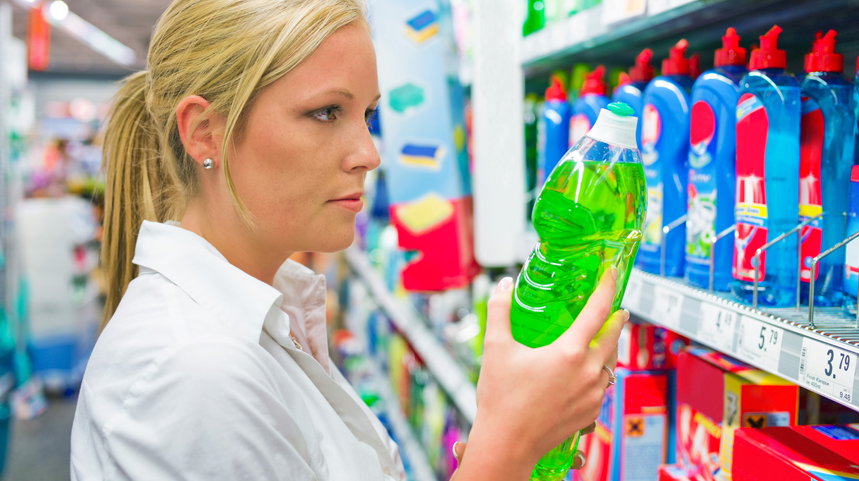Every year, household magazines haul out a list of the best green cleaning products, especially since buying eco-friendly products has never been more popular. Unfortunately, many people don’t take the time to think critically about what products to use in the home, or fail to educate themselves about ingredients and key phrases. This year, we took a different approach to selecting green cleaning products. Here are few new ways to better rationalize your choices for eco-friendly cleaning products and what to use and buy.
Some of the best green cleaning products are in your home already.
One of the tripwires for many homeowners is this concept that’s been drummed into us for decades about American consumerism and why we buy what we buy. There are entire corporations whose sole purpose is to figure out the psychology of buying stuff. Consequently, we find ourselves with the mindset that if a product doesn’t have an attractive label, recyclable packaging, and a stamp from third-party certification service, it’s not a real cleaning product. But if you look around your home, you can find dozens of green cleaning products ready to go.
 One of the most versatile products that can be used for green cleaning is vinegar. There are literally hundreds of ways to use vinegar for eco-friendly cleaning. Some people get worried that the smell will linger like the wake of dying Easter eggs, but the smell really dissipates within a half-hour or so, and it doesn’t carry the health risks of ammonia or alcohol-based products. You can use vinegar to scrub almost any surface from the kitchen counter to the windows, as well as cleaning tools, the drain or your windows.
One of the most versatile products that can be used for green cleaning is vinegar. There are literally hundreds of ways to use vinegar for eco-friendly cleaning. Some people get worried that the smell will linger like the wake of dying Easter eggs, but the smell really dissipates within a half-hour or so, and it doesn’t carry the health risks of ammonia or alcohol-based products. You can use vinegar to scrub almost any surface from the kitchen counter to the windows, as well as cleaning tools, the drain or your windows.
Another versatile green-friendly cleaning product alternative is salt. You can use salt combined with vinegar and baking soda to clean your oven, one part salt to one part vinegar to clean up dishes, or simply use it to soak up wine stains.
If you look around or simply search on the Internet for household cleaning alternatives, you can find all sorts of uses for surprising household cleaners, from lemons to ketchupto soft drinks.
Make the products you already own as clean as possible.
It’s counter-intuitive, but plenty of people spend money on expensive, possibly dubious eco-friendly products but continue using their appliances in eco-harmful ways. Learning to properly use appliances like energy-intensive dishwashers and washing machines, as well as having items like your HVAC serviced regularly can help make your home greener than any off-the-shelf product does.
 If you must buy green cleaning products, please know what you’re buying.
If you must buy green cleaning products, please know what you’re buying.
Believe it or not, the market for green cleaning products is still the “wild west,” when it comes to oversight. Tons of brands claim to be “natural” or “organic,” but unlike food, there’s no federal oversight in the housekeeping aisle.
Your best bet is to educate yourself about what you’re buying. At first glance, shorter is better but specific ingredients matter, too. If you don’t recognize a primary ingredient, it’s probably worth a quick search to find out if it’s innocuous or toxic.